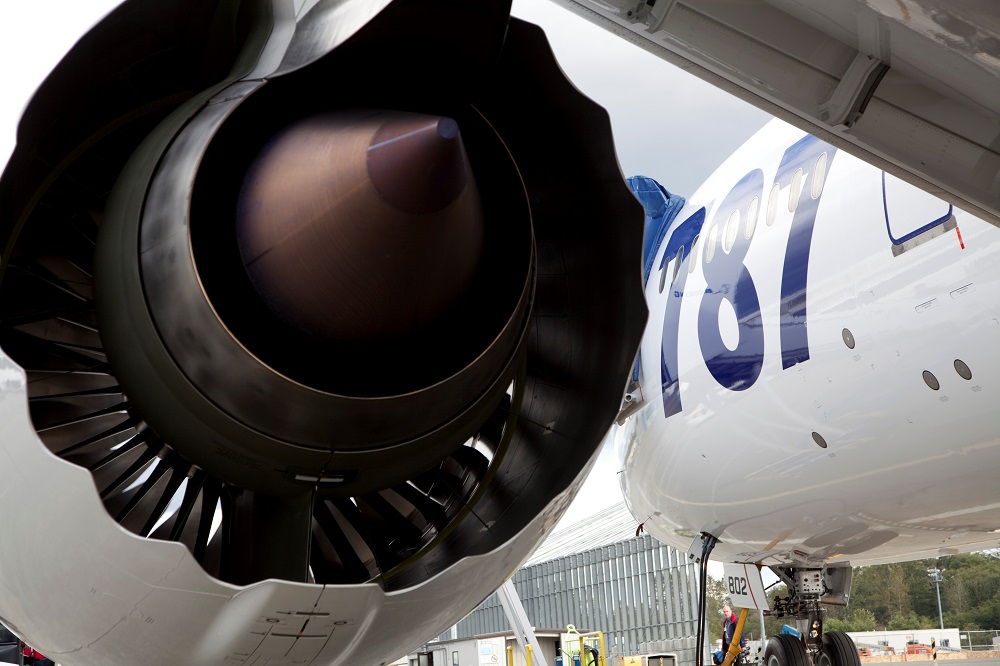The US Federal Aviation Administration has moved to limit long-range operations of about a quarter of the global fleet Boeing 787 Dreamliners because of the latest problems with some Rolls-Royce engines.
The FAA has lodged an airworthiness directive with the US Federal Register which would reduce from 330 minutes to 140 minutes the distance B787s equipped with Trent 1000 package C engines can travel from airports at which they can make an emergency landing.
There are 380 package C engines currently in service with airlines, according to Rolls-Royce, but other variants of the engine are not affected by the latest problem.
Airframe manufacturer Boeing estimates about 25 percent of the Dreamliner fleet is powered by the package C engines and says it is working with Rolls-Royce and customers to resolve the problem.
The issue does not affect 787s currently in production.
Reducing the Extended Range Twin Engine Operational Performance Standards ( (ETOPS) requirement to 140 minutes will affect long-haul routes such as those across the Pacific.
It comes after several failures of Trent 1000 Package C engines and “numerous” reports of engine inspections finding cracked blades resulting in unscheduled engine removals.
The FAA said it had been told by Boeing that Rolls-Royce had determined that intermediate pressure compressor stage 2 blades have a resonant frequency that was excited by airflow at high thrust settings under certain temperature and altitude conditions.
The vibration caused by this could result in cumulative fatigue damage that could cause blade failure and engine shutdown.
“In the event of a single engine in-flight shutdown during the cruise phase of flight, thrust on the remaining engine is normally increased to maximum continuous thrust (MCT),’’ it said
“During a diversion following a single engine shutdown under an ETOPS flight, the remaining engine may operate at MCT for a prolonged period, under which the IPC stage 2 blades would be exposed to the resonant frequency condition.
“Therefore, an ETOPS diversion will put the remaining engine at an operating condition that would significantly increase the likelihood of failure of the remaining engine.
“In addition, if the remaining engine already had cracked IPC stage 2 blades, the likelihood of the remaining engine failing will further increase before a diversion can be safely completed.”
The regulator said the AD was an interim action and Rolls-Royce was developing a modification would address the safety problem.
“Once this modification is developed, approved, and available, we might consider additional rulemaking,’’ it said.
Rolls-Royce has increased its maintenance, repair and overhaul capacity by 300 percent over the past two years and has mobilized support teams to cope with Trent 1000 problems.
It has also redesigned specific parts of the compressor, with the first parts currently in manufacture. However, they are not due to be incorporated in engines early next year after first being validated and certified.
The FAA decision came after the manufacturer and European safety agency EASA last week reduced the number of take-off and landing cycles aircraft powered by Package C engines could perform between inspections.
Air New Zealand said it had been previously required to check the engines every 3000 cycles but it now had to do the checks every 300 cycles.
The New Zealand carrier said Monday it expected to continue operating to all international destinations despite the ETOPs restrictions on its 787s.
However, there would be some routes with aircraft and/or departure changes.
“Air New Zealand has a fleet of 27 long-haul aircraft including Boeing 777-200s, Boeing 777-300s and Boeing 787-9 Dreamliners,” a spokeswoman said.
“Our 777-300 fleet has an ETOPS rating of 330 minutes, as does half of our 777-200 fleet, the remaining 777-200s operate at 240 minute ETOPS.
“One of the 787-9 aircraft in our fleet is currently fitted with Rolls-Royce Trent 1000 TEN engines meaning it is unaffected by this issue and retains an ETOPS rating of 330 minutes.”
Trent 1000 engines have also been affected by the faster than expected corrosion of turbine blades due to sulphidation, a problem that occurs in all turbine engines and stems from sulphur compounds in fuel and airborne salts.
Read EASA orders airlines to de-pair some Rolls-Royce 787 engines.
This prompted EASA in late 2017 to issue a directive to “de-pair” corrosion-affected engines to make sure they did not have two on the same plane.
Rolls-Royce introduced a program to replace the intermediate pressure turbine blades on certain engines and introduced design revisions. The program also addressed cracking in an IP rotor seal.
The engine manufacturer advised airlines to remove from service any engine where a high level of intermediate turbine blade sulphidation exposure was identified.
Air New Zealand was forced to ground three of its aircraft and was charter replacements over the busy Christmas period as a result of the problem.
READ: Air New Zealand charters planes to replace grounded 787s
.
























